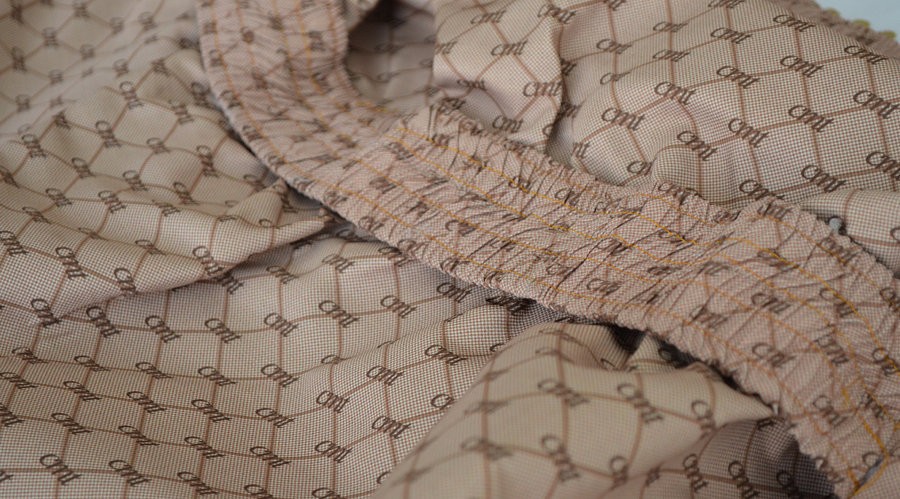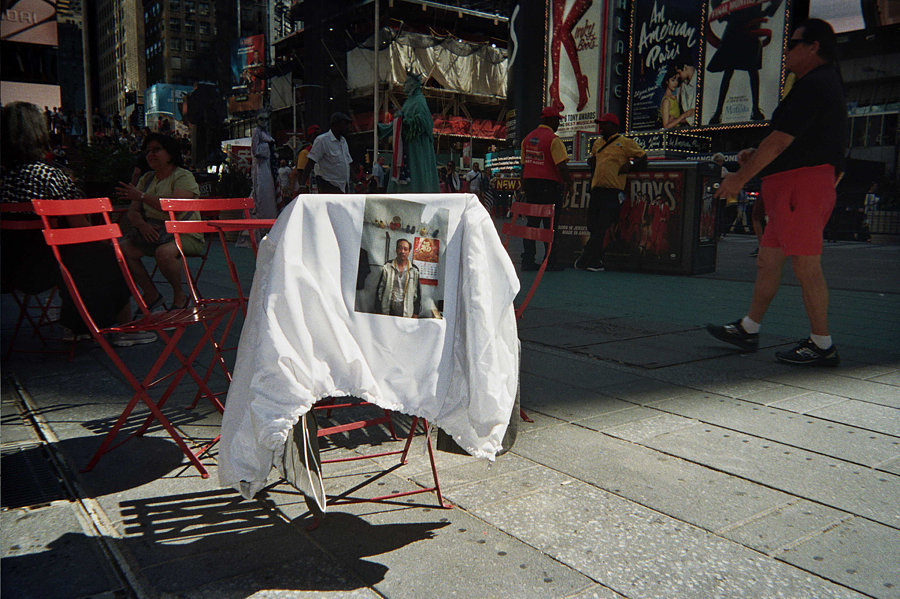

SONG SEO YOON
Seoyoon Song is one of 12 finalists in this year’s fifth-edition Parsons x Kering Empowering Imagination design competition, a program that grants its two winners a two-week trip to the Kering facilities in Italy, including the Kering Materials Innovation Lab.Song was born and raised in Seoul, South Korea, and moved to New York at 16. “I’m very attracted to the power of clothing since it functions almost as a skin of our body,” she says. “I want to use this power of clothing as a medium to address social issues and sustainability.” - Vogue She started work on a collection celebrating the garment workers who keep New York’s fashion industry humming. The result, titled Cut Make Trim, includes embroidered labels on the exterior of the clothes listing their origin points — the seamstress who made them, the factory that produced them. One gown is shown covered with a plastic cape that resembles a garment bag. “We only see the luxury side of fashion in the magazines. We’re always dependent on the workers and the process, which is always hidden and avoided. I thought if they’re interacting with each other with harmony the outcome will always become more beautiful.” - VFILES
Some of designers are afraid of commercial fail of their collection or the massmedia influence on their work❨criticism). What fears did you have while making your clothes?
I was not afraid of them, but now I am actually starting to realize I should fear sales and media very much since, without an exception, every designer needs money and exposure to sustain their brand. But my biggest fear is always about me hating my own garments. My ultimate goal of my life is to create something eternal but I always end up hating my old works sooner or later. I tried to create timeless designs for my collection but I don’t think I succeeded on that yet.
Whats your attitude towards massmarkets influence on peoples taste? Do you believe that personality will get over the mass consumption?
To me, there is no good taste or bad taste, it’s just whether you have a taste or not have any. And I think having a taste is not like a gift that you are born with. It just depends on how much you appreciate art and culture, how much you learn about them, and how much you create. The mass consumption should not influence your personality or taste because they don’t teach you any art or culture in depth. But if you are caught up by the mainstream and be lazy on learning, it will overpower your personality and taste. I think it all depends on you about keeping up with taste.
“The mass consumption should not influence your personality or taste because they don’t teach you any art or culture in depth. But if you are caught up by the mainstream and be lazy on learning, it will overpower your personality and taste.”

What is your most important life lesson?
That’s very hard to answer because I change every year and the way of living changes every year. There are so many on-going thoughts flowing in my head for many months and one of them is that time does not have a beginning or an end. But most recently, I was told something like childhood has no age limit, and it has been driving me crazy, I am trying to really absorb the idea.
How art helped you on your way of identity formation?
I loved art so much since I was into painting and drawing. Art history classes were always my favorite classes in Parsons and from there I got into philosophy. I think I was dead for my entire life until I learned philosophy. So I am only 3 years old now, still learning and forming my identity. If there was no art, I would have never got into philosophy.
You wrap your clothes into the garment plastic bags.What are you trying to say by doing it?
I am into things that are hard to see, or any intangible thing. Books that I was reading during the last year of college happened to also talk about those invisibles. One compared the idea of truth with mist, others compared fear with dust, or wind and air; saying how they are everywhere surrounding us, we even breath on them but we still can’t see them. That’s how i see the world, I am looking at it but I barely know what I am seeing. That was the impression I got from fashion industry during the research as well. So I was searching to create my own version of metaphor of the invisible and then I saw all the clothes and patterns covered in plastic at the garment factories. I loved how the clear or frosted plastic was affecting my perception towards the fabric inside and I decided to cover all of my garments in plastic.
What are the most interesting offers have you received after Parsons x Kering Empowering Imagination design competition?
I got many interesting offers since but a lot of them didn’t really get through at the end. But of course, winning Vfiles Runway was the biggest opportunity I have accomplished after Kering.
“I could have created my own version of print design but I thought it wouldn’t have the same power of what the imitations of a well known luxury brand could give.”

Yet we know that the idea of CMT ❨Cut, Make, Trim) pattern was borrowed from Gucci and we couldn’t ignore that, although we like your realization. Why Gucci? \ \ Basically I was trying to bring the high-end and low-end reconciled together, and I thought monogram logo prints are just the very classic out of the classic definition of luxury. So I made all kinds of various monogram prints borrowed from Gucci, LV, Fendi, Dior, Goyard, etc and then Gucci version just looked the best out of all so I chose it. I could have created my own version of print design but I thought it wouldn’t have the same power of what the imitations of a well known luxury brand could give. Plus, Gucci is pretty much the symbol of luxury. Some people say “it’s Gucci” all the time when they see something so hip. I think it’s hilarious.
In the interview with Vogue you said that you was born and raised in South Korea & moved to New York at 16-years-old. How often do you visit your motherland?
I go there every summer because all of my family live there. I actually took a year off of the college few years ago and stayed in Korea to work as an assistant video director/editor.
Your idea of using mannequins instead of real models catched our attention. Is that what you said: the reconciliation between opposite forces - fake and genuine?
I also thought about that they were coincidentally relating, but it doesn’t mean anything, I was just very into the look of mannequins. Weird looking mannequins in garment district always drew my attention, I would always take pictures of them.
On whom would you be excited to see your clothes on?
My collection is womenswear but I would be very excited to see my favorite musicians like HOMESHAKE or Connan Mockasin performing in my clothes at their shows. That would be my dream.
How do you think fashion will change in the nearest 10 years, taking into consideration todays fashion influence and technological progress?
All the hypes we have today right now won’t stay too long in our industry. I think something completely new will take over the industry sooner or later but I am not sure what it would be, maybe its the technology. Technology will definitely change the industry a lot in the near future. I see a lot of potential but nothing is really happening yet to the mass market.
The last, but not least, a few words about Russia?
Russia is a very interesting country. No one could deny that Russia is influencing the current fashion so much. I love their eagerness for freedom. I think Russia is pretty similar to Korea as well, we both have pretty conservative and suppressed societies. But it could not stop Russian young generation’s creativity and passion, and I think I am starting to see that in Korea too. I am looking forward to seeing the future of fashion.
Photography: refigural, Mateus Porto, Vogue
Song Seo Yoon for CCULDESAC